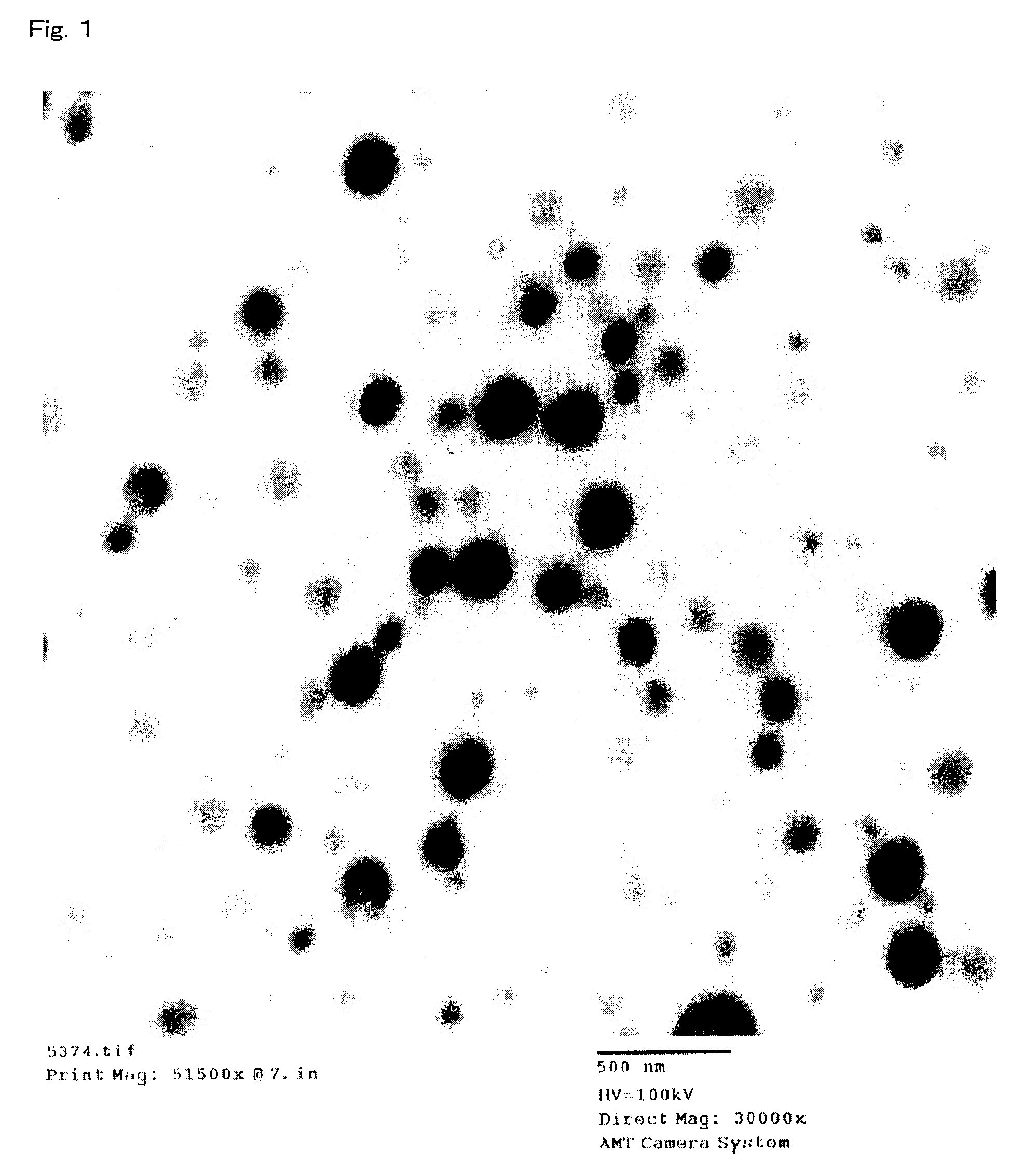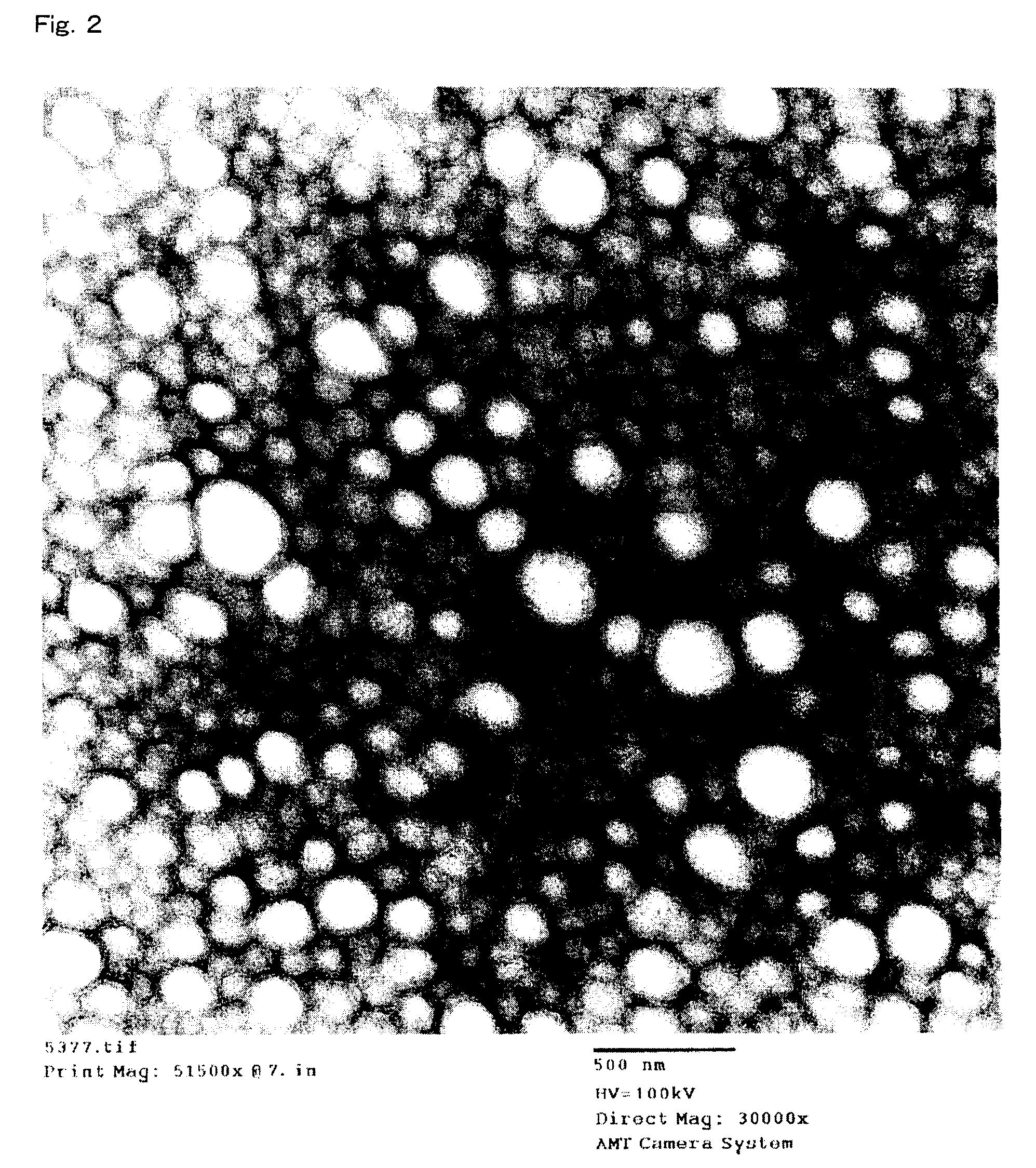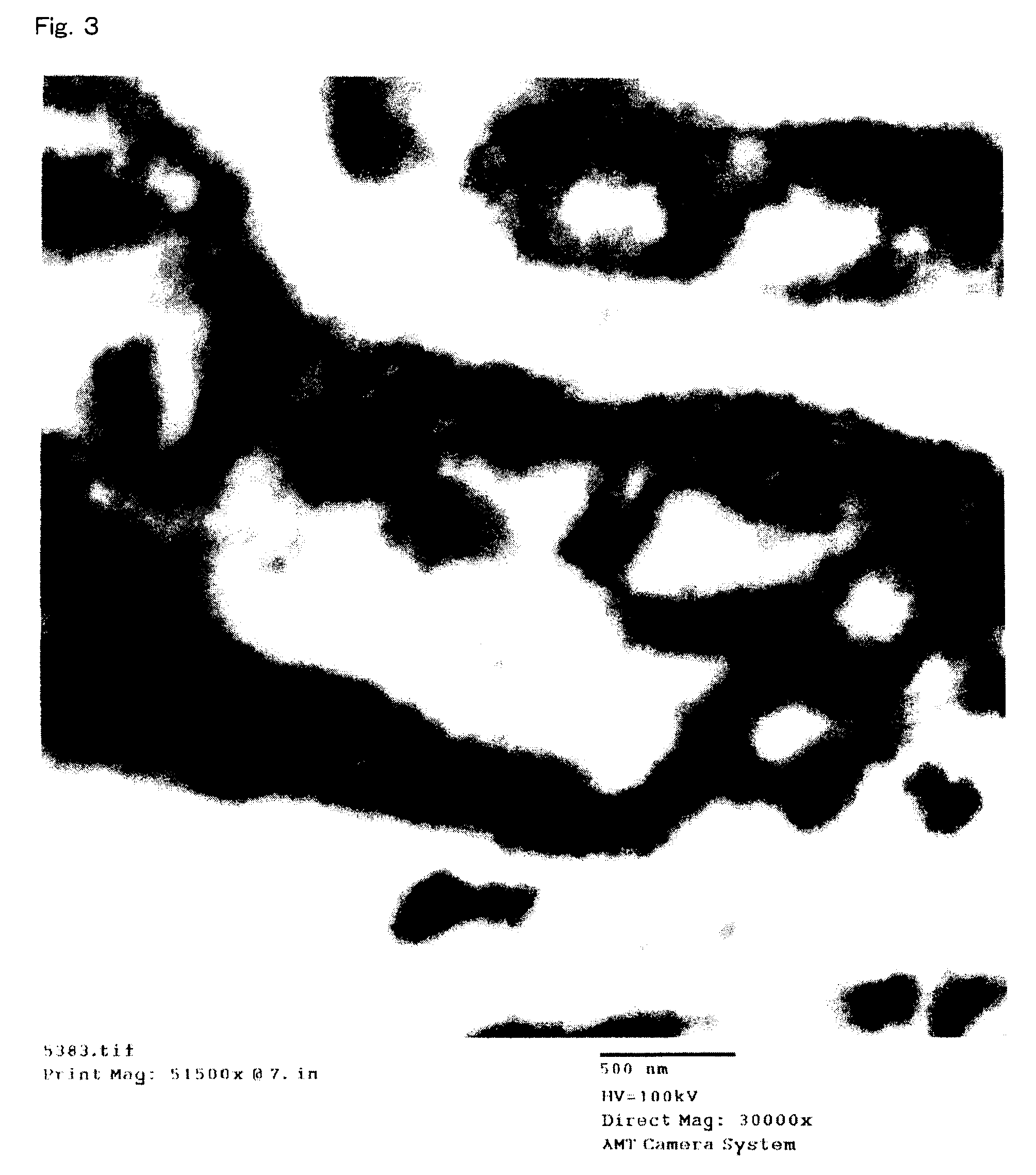Polylactic acid composition
a technology of polylactic acid and composition, which is applied in the field of polylactic acid composition, can solve the problems of limited kinds of spent products collected for recycling, carbon dioxide, and often tend to generate toxic gas, and achieve the effects of high mechanical properties, excellent properties, and high flexibility and heat resistan
- Summary
- Abstract
- Description
- Claims
- Application Information
AI Technical Summary
Benefits of technology
Problems solved by technology
Method used
Image
Examples
reference example 1
Organoaluminum Compound
Preparation of isobutylbis(2,6-di-t-butyl-4-methylphenoxy)aluminum
[0240]The internal atmosphere of a three-neck flask having an internal volume of 1 L was displaced with argon, and the three-neck flask was equipped with a three-way cock. To the flask were added 250 ml of a dried toluene (obtained by drying toluene with sodium and distilling the dried toluene under an argon atmosphere) and 110 g of 2,6-di-t-butyl-4-methylphenol and dissolved by stirring at a room temperature. To the obtained solution was added 68 ml of triisobutylaluminum, and the mixture was stirred at 80° C. for about 18 hours to prepare a toluene solution of an organoaluminum compound having a concentration of 0.6 mol / l of isobutylbis(2,6-di-t-butyl-4-methylphenoxy)aluminum.
reference example 2
Production of (B-1) Acrylic Triblock Copolymer
[0241](1) A three-neck flask having an internal volume 10 L was equipped with a three-way cock, and the inside of the flask was deaerated and displaced with nitrogen. Under a room temperature, to the flask were added 5080 g of a dried toluene, 508 g of 1,2-dimethoxyethane, and 280 ml of the toluene solution of the isobutylbis(2,6-di-t-butyl-4-methylphenoxy)aluminum (168 mmol of the organoaluminum compound was contained in the solution) obtained in Reference Example 1. Further, 33.7 mmol of s-butyllithium was added to the flask and then 300 g of methyl methacrylate was added thereto. The mixture was polymerized at a room temperature for 1 hour, and 0.1 g of the polymerization (reaction) solution was sampled (aliquot sample 1).
[0242](2) Following the polymerization (1), the internal temperature of the polymerization solution was cooled down to −25° C., and 1900 g of n-butyl acrylate was added dropwise thereto over 2 hours for a polymerizat...
reference example 3
Production of (B-2) Acrylic Triblock Copolymer
[0248](1) A three-neck flask having an internal volume 10 L was equipped with a three-way cock, and the inside of the flask was deaerated and displaced with nitrogen. Under a room temperature, to the flask were added 5080 g of a dried toluene, 508 g of 1,2-dimethoxyethane, and 347 ml of the toluene solution of the isobutylbis(2,6-di-t-butyl-4-methylphenoxy)aluminum (208 mmol of the organoaluminum compound was contained in the solution) obtained in Reference Example 1. Further, 41.7 mmol of s-butyllithium was added to the flask and then 1000 g of methyl methacrylate was added thereto. The mixture was polymerized at a room temperature for 1 hour, and 0.1 g of the polymerization (reaction) solution was sampled (aliquot sample 1).
[0249](2) Following the polymerization (1), the internal temperature of the polymerization solution was cooled down to −25° C., and 500 g of n-butyl acrylate was added dropwise thereto over 2 hours for a polymerizat...
PUM
| Property | Measurement | Unit |
|---|---|---|
| temperature | aaaaa | aaaaa |
| temperature | aaaaa | aaaaa |
| glass-transition temperature | aaaaa | aaaaa |
Abstract
Description
Claims
Application Information
 Login to View More
Login to View More - R&D
- Intellectual Property
- Life Sciences
- Materials
- Tech Scout
- Unparalleled Data Quality
- Higher Quality Content
- 60% Fewer Hallucinations
Browse by: Latest US Patents, China's latest patents, Technical Efficacy Thesaurus, Application Domain, Technology Topic, Popular Technical Reports.
© 2025 PatSnap. All rights reserved.Legal|Privacy policy|Modern Slavery Act Transparency Statement|Sitemap|About US| Contact US: help@patsnap.com



